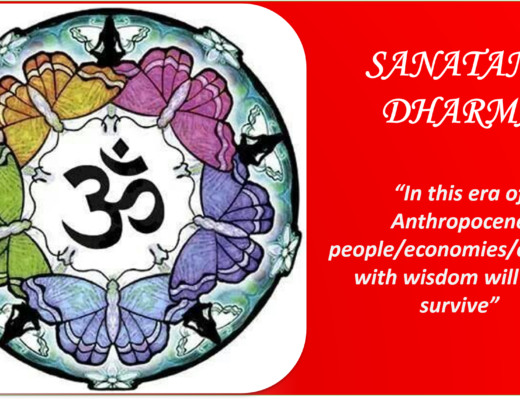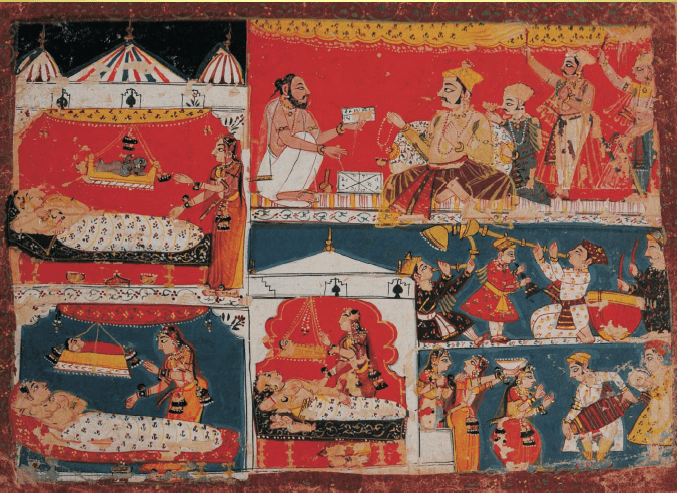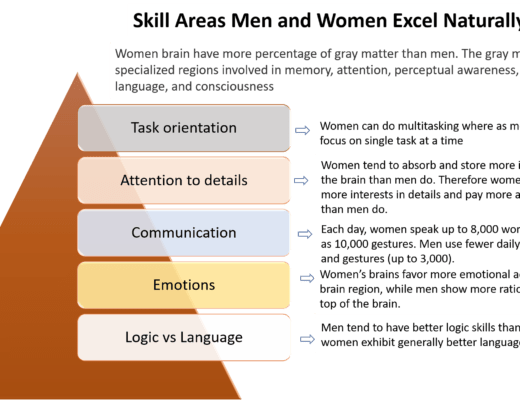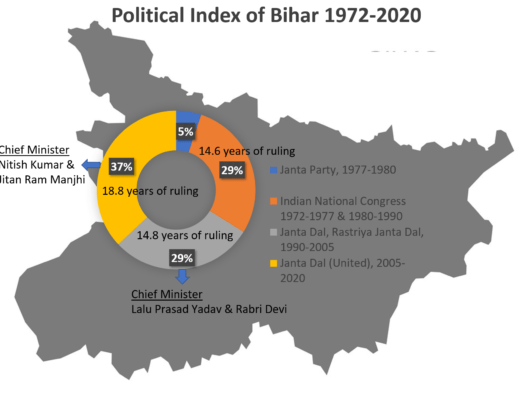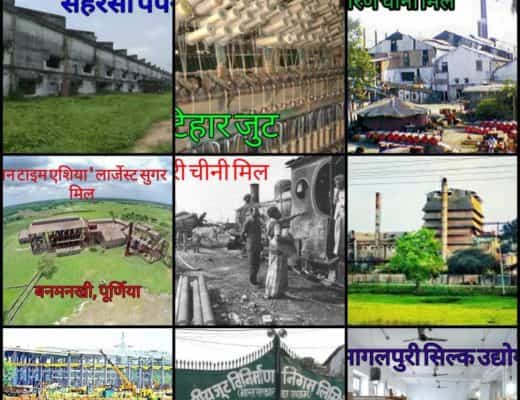Sanatana Dharma identifies itself through various philosophies or darsana. It is important to understand that darsana as a word is deeper than philosophy, for it does not just guides your life, but defines what your aacharana or behaviour would be, and what dharma or the path of civilization means to the adherent. As per the Indian philosophy academics Satishchandra Chatterjee and Dheerendramohan Dutta, Hindu philosophy is a wide umbrella, which divides itself into two broad umbrellas – Astika and Nastika. In his tome ‘An Introduction to Hindu Philosophy’, Chatterjee and Dutta covered the subjects in depth, and noted that a major defining feature for both the texts essentially came back to the same axis of reference – belief in the Vedas[1], noting how the Vedas “are directly or indirectly responsible for most of…philosophical speculation”. However, this in itself is somewhat misleading, as several darsanas put themselves at the centre and attempt to redefine what astika would mean by using such means as belief in the atman, the other lokas or planes of existence, or even the manner in which they viewed each other and their manners of existence. However, given that quibbling apart, it would make sense to classify based on the axis of belief in Vedas or not. The various darsanas therefore fall into the two in the manner presented in Table 1.
Table 1: Astika vs Nastika Darsanas
| Astika | Nastika |
| Nyaya, Vaisesika, Samkhya, Yoga, Mimamsa, Vedanta | Buddhism, Jainism, Ajivika, Carvaka, Ajnana |
This classification is not a new one, and certainly nothing unique stands about it. Scholars for centuries kept contemplating this defition. As late as the times of the initiation of the Vijayanagara empire, eminent scholar and then Shankaracharya of the Sringeri Sarada Peetham, Sri Vidyaranya ji, had detailed Indian philosophy into sixteen detailed schools, elaborating on each of them in great depth. The sixteen schools, delved upon in the treatise Sarva-Darsana-Samgraha[2], went much further in identifying the various philosophies. These schools were defined among other things by the multiple foundations, including belief in Vedas, belief in Brahman, belief in the concept of atman and its relationship with Brahman, differences between the concepts of Brahman, Ishvara and Deva, importance of ritualism and relationship with the world around the adherent of the darsana. While it is pertinent to note that some of the schools had all but disappeared by the time Vidyaranya ji wrote the treatise, the observations derived from reading critiques across ages as well as original texts led modern day scholars to marvel at the originality of the work. For the sake of convenience, the schools are classified to make it easier to understand the relationships, and also include darsanas that branch out further due to their peculiarities on some of these questions.
| Sanatana Darsana | Nastika Darsana |
| •Advaita •Vedanta •Nyaya •Vaisheshika •Samkhya •Pasupata •Patanjala •Paniniya •Pratyabhijna •Saiva •Dvaita/Purnaprajna •Jaiminiya | •Buddhism •Jainism •Charvaka |
What remains important to note however is that even today, the relevance of these frameworks holds a degree of relevance in defining the manner and relationship of the various sampradayas with their surroundings. Any other contemporary philosophy has also seen reactions in different ways. For instance, the Tamil works of the Jaffna Saiva scholar Arumuka Navalar had been meticulous in his critiques of Christianity. For that matter, the detailed critiques put out by the likes of Swami Dayanand Saraswati , Chattampi Swamikal and Vishnubawa Brahmachari[3], each coming from a different school of darsana, underscores the manner in which the contemporariness of the texts and their understanding, their contextualization and the relationships with the Abrahamic faiths and developing a systemic response to the notion of supremacy as pushed through colonial narratives over time, creating a robust intellectual response from within.
Importance of Purushartha and Karma in Indian Society
Whatever be the darsana, the emphasis on purushartha has always been significant. Barring perhaps the charvaka system, each attaches a degree of importance to the ideas of dharma, artha, kama and moksha in varying degrees. The eventual goal of the varying darsanas is not even moksha; rather it is mukti, or liberation from the bonds of the world in their entirety. However, it is not that mukti is to be sought independent of the four purusharthas; rather, the four serve as a sequential process towards the same, somewhat similar to the conceptualization of an algorithm that forms the underlying principle of any software.
The concept of purushartha is different significantly from the conception of the Calvinistic and Lutheran thoughts on the relationship of man and God and man and society that eventually serve as the source of all individualistic and libertarian principles. Purushartha defines your relationship with yourself and the society that surrounds you, as it defines your duties rather than your rights, as Atul Kerde had summed up[4]. According to Kherde:
It was the prevalent belief that you would achieve moksha only by fulfilling your duties, regardless of how the world treated you. Your duties were your obligations which you owed to the world. The duties involved:
- Following your dharm (profession),
- Generating income (arth) ONLY out of your dharm, and
- Enjoying that arth (taking kaam) only after clearing all obligations would lead to
- Freedom (moksh) from the worldly concerns and give you peace of mind.
Purushartha, as Coomaraswamy had noted, forms the standard of social ethics which take into account the whole man[5]. It serves as a yardstick for measuring the utility of a given activity in total or in individuality or groupings without detriment of the others. The significance of purushartha arises in the pursuit of the ideal world, and helps us realize exactly how we are different from any other living creature on the planet. As the philosopher M Hiriyanna had noted[6], the Aitareya Aranyaka elaborates how man alone says what he has known, and sees what he has known, and is aware of the other world beyond the ony immediately in front of him, and also conceives an ideal world fixed and independent of it. As Hiriyanna wrote,
In this feature of man’s activities, that they are consciously directed to an end, we find the criterion of ‘human values’. They are values in the fullest meaning of the term; and we propose to confine our attention in what follows to them, which are described in Sanskrit as purusharthas or ‘what are desired by man.’
The importance of striving towards an ideal world therefore becomes increasingly evident as a system of values, working to ensure that the various duties are fulfilled with due significance attached thus to each of them. Acting through the proper conduct and working towards the generation of prosperity and well-being in society in various ways is not just meant for the individual alone – this puts into perspective several things, including entrepreneurship, the relationship of the individual and his/her wealth with that of society, and the values of ensuring an attitude of contribution. Indeed, the role of purushartha therefore serves as the root of the concept of seva or service, in addition to the philosophy of karuna or the attitude of karuna towards the others.
The significance of purushartha in the societal sense is not appreciated enough. The fact that such texts as Kamasutra, Arthashastra and Dharmashastra exist and the philosophy of purushartha are therefore testament to an important fact – that Santana Dharma is not an escapist religion, and does not put undue pressures on its adherent to renounce the world. As pointed by Shyam Krishnakumar[7], the significance of living in this world, in this society and contributing to it can be gauged by the fact that texts would begin by stating which of the purusharthas they aim to fulfil. For instance, as the Ramayana states, “kamartha-guna-samyuktam dharmarthaguna-vistaram” meaning “it deals with the worth of kama and artha and treats in extension of dharma and moksa.”
With this emphasis on purushartha, it becomes evident that karma is essential to the performance of duties when in the fold of Dharma. Karma is however deeply driven by the belief in aacharana or conduct that is essential to upholding Dharma. Of course, it must be qualified that this is in no way unique to Hinduism; rather, the philosophy of karma and its essentiality to the concept of ensuring Dharma in society is invaluable for all Indic thought systems. The Buddhist Dhamma Sasana as elucidated by the Buddhist canonical literature delve deep into the belief, with the right conduct playing an important role. For instance, the Madhura Sutta is instructive[8], as it highlights important things – while Kshatriyas are Bkept above Brahmins, the reaffirmation of the actions of the various constituents of society is essential to maintaining order in society and upholding Dharma, or doctrine as Robert Chalmers spelt it out. Similarly, Jaina darsana also emphasize significantly on right acharana and karma in society, detailing the conduct similar to other Indic darsanas for various constituents of society.
Karma as a philosophy is layered and more complex than just present day conduct. By defining its relation with time, a whole set of categories are created. However, it is not that one category is independent of the other – good karma as practiced by a person has the power to nullify, even supercede the effects of bad karma that one may have undertaken. The importance of karma is evident in the fact that it is considered as one of the yoga margas or ways to achieve mukti from the cycle of birth and death. Of course, it is made more than clear that controlling your karma all the time is very difficult, as observed in the dilemma of King Janaka when donating to rishis despite a cow being slaughtered; however, there is clarity in canon that there is an attempt to look at your actions in sum total, and not necessarily individuality. Walking the path of Dharma is never considered easy; however, its importance is necessary when put in the larger context of what your duties are as an individual, and what it would take to achieve the four purusharthas in life.
Past actions determine what you can be born as or into; however, it does not in any darsana stop you from becoming what you can by achieving your maximum potential. Mahabharata refers to two particular tales, which also form two Gitas of their own, that make for important case studies to understand the Dharmic view of karma and how action and conduct determine your stature and path to mukti.
- Ashtavakra Gita: Ashtavakra was born a cripple out of a curse from his father for having corrected his uccharana while still being in the womb. He is called Ashtavakra out of the fact that he has eight vakra (twists) in his whole body. However, through his karma, Ashtavakra wins a critical debate in King Janaka’s court, and goes on to even give upadesha about the relationship of aatma with Brahma, which forms a critical part of Advaita canon literature.
- Vyadha Gita: A sannyasi who has achieved great yogic powers is humbled by a simply vyadha or butcher, who gains enlightenment by his sincerity and adherence to karma. Moreover, the butcher also advises the sannyasi, which goes on to also espouse an important philosophy, as pointed out by Swami Vivekananda in one of his lectures – that karma is what determines your stature and respect in society, and will free you from all bondages.
Another important aspect of always adhering to Dharma and practicing karma accordingly can be seen in the popular text of Ramyana. In its various Indic adoptions – be it the Hindu versions, Jain version, Buddhist version, or the version as told in Guru Gobind Singh’s Dasam Granth, there is more than ample clarity on not giving up on man’s Dharma under any circumstance, for it is the true path to mukti. The end results often vary; however, the commonality in the understanding of Dharma across the various Indic darsanas remains indisputable, terminology and epistemology usages apart.
Therefore, one realizes that what makes karma unique in itself is that the philosophy of karma is self-fulfilling in itself – the sense of fatalism does not define Hinduism, as karma brings in a degree of independence to what the eventuality of your being turns out to be. You are your own fate’s driver to that extent – the nature and origin of your birth do not necessarily determine your eventual achievement and the path of salvation, as the key messages from the kavyas emerge. Therefore, one can also see that there is a definition on the limits to the idea of free will as well, bounded as it is by the idea of karma.
Seva and Karma – The Dual Helix of Causality and the Mandate to Engage
It is interesting to observe the idea of seva or service in the Indic darsanas. Whatever be the outlook towards life, the importance to service of others is given a lot of importance. This definitely arises from the intertwined helical relationship between karma and seva. A succinct example of the depth of embedding of seva in the philosophy of karma can be be found in the Srivaishnava sampradaya’s understanding of the Advaita marga as put out first by reformer saint Sri Ramanujacharya, who lived in the 12th century AD. As Mohan Sagar had elaborated in his short piece on Ramanujacharya’s darsana[9] highlights some important facts:
- Each and every aatma or soul in a crude translation is in its essential nature, its svarUpam, a simple receptacle to the Lord’s Grace, and a humble instrument to His Good. This nature of servitude is not only limited to the soul, but is indeed the nature of matter, as well.
- Consequently, the Lord is likened to the Soul of the Universe, with all the myriad of souls, the bodies in which they reside, and the matter that are their material possessions, being likened to His Body, dependent wholly upon Him and serving as Instruments to His Good. It only stands to reason then that when we seek to love and serve God, we must be willing and able to serve what is His, namely His Body, this Universe.
- When we go beyond the things that separate us, when we know that each and every one of us exists solely because of the Grace of God, and when we know that all living beings are in their True Nature servants to Sriman Narayana, we can begin to operate from this mood of serving the world as a means of expressing love and servitude to Him, nurturing and caring for each other such that we can serve Him better.
The nature of seva is also defined in its impact, both on the physical level and the metaphysical. It is well recognized that the conflict of what constitutes seva, the boundaries within which it gets defined, and its connection to karma are all limited in how individuals and societies relate within themselves and with other systems of belief and forms of social setups. Scale is appreciated, but not at the cost of the bhava or the sense of devotion that drives it. A classic example can be found in the parable surrounding Sri Rama’s affection for the chipmunk who brought tiny stones to build the bridge that would help Sri Rama’s vanara sena (monkey army) across the ocean to Lanka. As a rendition states Rama telling the vanaras, who made fun of the squirrel[10]:
“Always remember, however small, every task is equally important. A project can never be completed by the main people alone. They need the support of all, and however small, an effort should always be appreciated!”
This seva bhavana in turn helps to therefore fulfil both at the physical and the metaphysical requirements of humans, and has driven philanthropic efforts in India for millenia now.
Seva does not go unrewarded in the matrix of religion, and does become ever more important as it is always about karma. The end goal of seva is not to gain heaven – rather, the end goal of seva is to ensure that your aatma gains mukti from the cycle of birth and death and become one with the Maker, a factor that makes the idea of service distinctly different from Abrahamic ideology of service to mankind, which is driven more by the idea of achieving heaven and coming closer to God. In this, the instructive guidance comes from the Dharmashastras, which clearly underline the need for people to be engaged with society through karma, which also includes seva. This can be seen in the way shastras talk about seva in improving the karma of humans. That philanthropy is dictated is a matter of fact reference for such scholars as P V Kane, who in a detailed note had this to say when criticizing the narrow view of missionary scholars of the West on the Dharmasastras[11]:
Every house-holder was called upon by the Hindu Śāstras to offer food according to his ability to students, ascetics and to all beings including the untouchable candālas and even dogs and crows. Every brāhmana who could teach had to do so without demanding any fee beforehand, Maṭhs were established in all parts of India for expounding religious books, feeding students and the poor. There are annasatras even now where hundreds are fed every day. No necessity arose throughout the ages for a Poor Law in India with its attendant evils well portrayed in Dickens’ famous master-piece ‘Oliver Twist’. The above were some of the different aspects of philanthropy and charity which are now dubbed social service.
Kane, in fact, goes on to further elaborate on the ancient nature of this sense of service, tracing it back to the Yajur Veda, which mandates the donation of cows to the sick people, and then finding evidences to the same in the Mauryan emperor Asoka’s reign, whereby hospitals were established even for beasts.
In the Buddhist and Jain realms, donations are extremely equally important. Service is again playing a major role in attaining moksha. In his introduction to the Niyamasara of Acharya Kunda Kunda, Uggar Sain had clearly enumerated hows every Jaina house-holder is supposed to perform six daily duties, one of which is Dana or charity, comprising of giving of food, knowledge, medicine, or protection[12]. Similarly, in Buddhist literature, one sees references to the importance of service and charity, as shown in the various Jatakas[13] or stories of the Buddha’s previous birth lives where he identified himself with the one who would engage in generosity, compassion and charity, and building many structures of service.
Karma, Seva and Resilience in Society Across Different Realms
Thus, one realizes that there is an inherent interrelationship between material and spiritual worlds created through the relationship of karma and seva. This in turn creates an interesting phenomenon – with the differentiation and classifications it brings in, a sense of strength and resilience is cultivated within different segments of society. This is a result of an adaptive process created by the essentiality of karma and seva created, thus creating capacity to respond to varying degrees of adversity ranging from serving everyday problems e.g. building a well to help tide water shortages in an area to extremities such as social trauma and disasters like disease outbreaks. This adaptive nature results in communities identifying opportunities from themselves to respond to the world they live in during normal as well as in times of emergency, having gotten the darsana or viewpoint that helps them to understand the nature of their relationship with their surroundings in the microcosmic and macrocosmic senses.
It is important to note that this philosophy of service, which stems from karuna or kindness towards others is primarily driven from the ideas of compassion in built in the various Hindu darsanas, predominantly in the Vedanta, Advaita and similar darsanas which clearly trace a relationship between all living beings, and draw their authority from the Vedas, Upanishads and the Brahma Sutra Bhashyas among other texts. It is also essential to realize that this is different in a metaphysical sense from typical Abrahamic philosophies of individualism because the idea of karuna is not mandated from a religious text as the word of God necessarily; rather, the various darsanas insist alongside the instruction in the codes of life in cultivating the spirit of service as an instinct within the spiritual realms driving one towards mukti. What it does clearly is that it challenges the very idea of the lack of single doctrine as Popper’s paradox would notice. Popper’s paradox is not entirely correct, because there is a broad umbrella of universal ideas that drive the various darsana adherents uniformly – the idea all along is that the doctrine has to be derived from within, subject to your intellect and understanding, and the philosophical realm guides have the job of cultivating them and guiding them on the path.
Having this cultivation is part of determining the perceptor’s subsequent journey on the path to mukti. This perception or anubhava thus brings in individual scale resilience, which permeates into social resilience among the various sects or sampradayas in dealing with each other, barring physical conflicts that arise with non-Indic systems entirely. With respect to the physical conflict, the paradigm changes altogether, and the response mechanism has also changed, ranging from intellectual challenge to the actual physical challenge, as noted earlier. However, with this karmic philosophy in place, there is not fatalism but the spirit of seeking freedom through actions. Kshatriya dharma of yore and Upanishadic thought clearly talks about freeing the soul through karma, which even the Bhagavad Gita endorses through its deep dive into karma philosophy. Keeping this in mind, one must realize that the spirit of karma and the spirit of service arising therefrom are essentially tools that help society build itself to be adaptive.
What does seva and karma do for society, one may ask? As the various shastra codes and the various texts tell us, or for that matter even nastika darsanas like Buddhism and Jainism, it teaches us also the merit one can gain by doing deeds that help society. In days of yore, making wells, undertaking charity, building temples and inns, running schools, training for guilds, protecting and nurturing animals and also serving food regularly to the needy has been seen with great virtue. It is not about attaining heaven ever, as people often mistake it – rather, it is about going beyond all states of existence. The power of charity and truth are well highlighted in such Pauranic tales as that of King Harishchandra. Serving the needy through various ways is very much part of pursuing the four purusharthas of life, and are necessary to achieve mukti. The thought was further taken up to be incorporated in what qualified for the ruling classes as Raj Dharma in Sanatana Dharma or say the Buddhist equivalents like Dhamaa Sasana as expounded in various Buddhist texts. However, it is not just ruling classes alone that have to adhere to Dharma – to each his own capacity was very much a part of all guides for people and their lives. Thus, it teaches us that one has to have a life of dignity and also work towards ensuring that no person’s dignity is taken away unless of course there are verifiable reasons to do so. Even then, giving a chance at mukti is very much part of nearly all the astika and nastika darsanas – a look at the story of the poet of Ramayana, Saint Valmiki demonstrates amply how second chances must be contemplated for people. Also, by building local capacities through such ideas as building infrastructure locally or nurturing cattle locally, one would essentially be helping to strengthen and improve upon local economic capabilities, that bring overall prosperity for the society in which the preceptor/adherent lives in. This is akin to investing back into society, but not for meriting just virtue – duty brings virtue yes, but it also helps to bring spiritual freedom and impart a sense of compassion towards others less grateful than the preceptor/adherent. This has been the formula of Indian society in many ways towards building a self-sustained society that also looks after itself whenever necessary, and creates a foundation of trust despite the starkly varying views of the perceptor’s relationship with the society in which he is living. Further, whenever there are difficulties, it is expected of the various affluent and materially well-off people to come to the aid of the people at the receiving end of the crisis. The famous adages of serving the Daridra Narayana by seeing the divine in each being as expounded by Swami Vivekananda is not a departure therefore from spiritual thoughts in any sense – rather, it is a precide yet deep exposition of what karma and seva are all about.
Conclusion
This essay clearly identified how karma and seva are not independent from each other in Dharmic thought, but are essentially feeders into each other. This sense is driven by the need to pursue the duty goals of life or purusharthas, which in turn define the relationship of man with the society in which he lives. The essay also detailed out how there is no fundamental difference seen across various viewpoints on how to look at the role of mankind, since compassion and viewpoint are drivers and help to identify that despite one’s present condition, the path of mukti is determined very much by one’s actions towards others and towards one self. One has also traced how these actions help to build a spirit of resilience in society through various means, and build capacity to deal with challenges that confront society in general. The prize here to lure people is not to attain heaven after death; rather it is to obtain complete freedom from the cycles of birth and death or mukti that has been set as the highest goal towards which humanity is supposed to strive. Diversity of doctrine does not imply lack of a doctrine; rather, this doctrine is supposed to be derived from within through the guidance and grace of darsana by the preceptor, and becomes the foundation stone for an ideal society.
[1] Chatterjee, S.C. and Dutta, D.M., An Introduction to Indian Philosophy
[2] http://www.gutenberg.org/files/34125/34125-h/34125-h.htm#CHAPTER_VIII
[3] Jones, K.W. eds., Religious Controversy in British India: Dialogues in South Asian Languages, SUNY Press 1992
[4] Kherde, A., Purushartha and Punishment, Pragyata September 2016, viewed at http://www.pragyata.com/mag/purushartha-and-punishment-245
[5] Coomaraswamy, A., What Has India Contributed to Human Welfare? Athenaeum 1915 London
[6] Hiriyanna, M., Indian Conception of Values: Purusharthas, reproduced by Prekshaa, November 2016 and viewed at https://www.prekshaa.in/indian-conception-values-purusharthas
[7] Krishnakumar,S., A Week With the Purusharthas, Indiafacts October 2018 viewed at http://indiafacts.org/a-week-with-the-purusharthas/
[8] The Madhura Sutta concerning Caste. By ROBERT CHALMERS, Journal Of Asiatic Society 1894 viewed at https://www.sacred-texts.com/journals/jras/1894-14.htm
[9] https://www.ibiblio.org/sripedia/ramanuja/magazine/RD_0102_online_vers.pdf
[10] http://www.bhagavatam-katha.com/ramayana-story-little-squirrel-who-helped-lord-rama/
[11] Kane. P.V., HISTORY OF THE DHARMA ŚĀSTRA (ANCIENT AND MEDIEVAL RELIGIOUS AND CIVIL LAW), Bhandarkar Oriental Research Institute, Poona 1941, viewed at https://www.australiancouncilofhinduclergy.com/uploads/5/5/4/9/5549439/history_of_dharma_sastras.pdf
[12] The Sacred Books Of The Jainas: Niyamsara (The Perfect Law) of Shri KundKund Acharya, Jagmander Lal Jain Memorial Series, Vol V, 1931 Central Jain Publishing House, viewed at https://archive.org/details/Niyamsara/mode/2up
[13] Tales of the Buddha retold by Ken & Visakha Kawasaki 1995, viewed at https://www.accesstoinsight.org/lib/authors/kawasaki/


